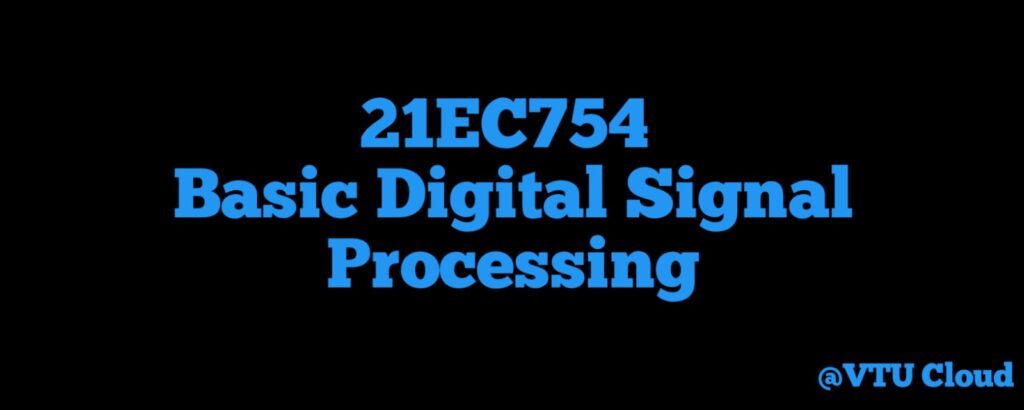21EC754 Basic Digital Signal Processing

Course Learning Objectives
● Preparation: To prepare students with fundamental knowledge/ overview in the field of Signal Processing
● Core Competence: To equip students with a basic foundation of Signal Processing by delivering the mathematical description of discrete time signals and systems, classifying signals into different categories based on their properties, analyzing Linear Time Invariant (LTI)systems in time and transform domains, basics of FIR & IIR Filter Design
SYLLABUS COPY
MODULE - 1
Signal Definition, Signal Classification, System definition, System classification, for both continuous time and discrete time, Definition of LTI systems
MODULE - 2
Introduction to Fourier Transform, Fourier Series, Relating the Laplace Transform to Fourier Transform, Frequency response of continuous time systems (Chapter3)
MODULE - 3
Frequency response of ideal analog filters, Salient features of Butterworth filters Design and implementation of Analog Butterworth filters to meet given specifications (Chapter8)
MODULE - 4
Sampling Theorem- Statement and proof, converting the analog signal to a digital signal, Practical sampling, The Discrete Fourier Transform, Properties of DFT, Comparing the frequency response of analog and digital systems (FFT not included) (Chapter 3,4)
MODULE - 5
Definition of FIR and IIR filters, Frequency response of ideal digital filters. Transforming the Analog Butterworth filter to the Digital IIR Filter using BLT to meet given specifications. Design of Low pass / High pass FIR Filters using the Window technique, to meet given specifications, Comparing the designed filter with the desired filter frequency response (Chapter8)
Course outcome
1. Understand the continuous time and discrete time signals and systems, in time and frequency domain
2. Apply the concepts of signals and systems to obtain the desired parameter/representation
3. Design analog/digital filters to meet given specifications
4. Design and implement the analog filter using components/suitable simulation tools
5. Design and implement the digital filter (FIR/IIR) using suitable simulation tools, and record the input and output of the filter for the given audio signal
Suggested Learning Resources
Text Books 1. ‘Signals and Systems’, Simon Haykin and Barry Van Veen, Wiley.
2. “Fundamentals of Digital Signal Processing”, Lonnie C Ludeman, John Wiley and Sons, 1986.Reference Books 3. ‘Theory and Application of Digital Signal Processing’, Rabiner and Gold
4. ‘Signals and Systems’, Schaum’s Outline series
5. ‘Digital Signal Processing’, Schaum’s Outline series